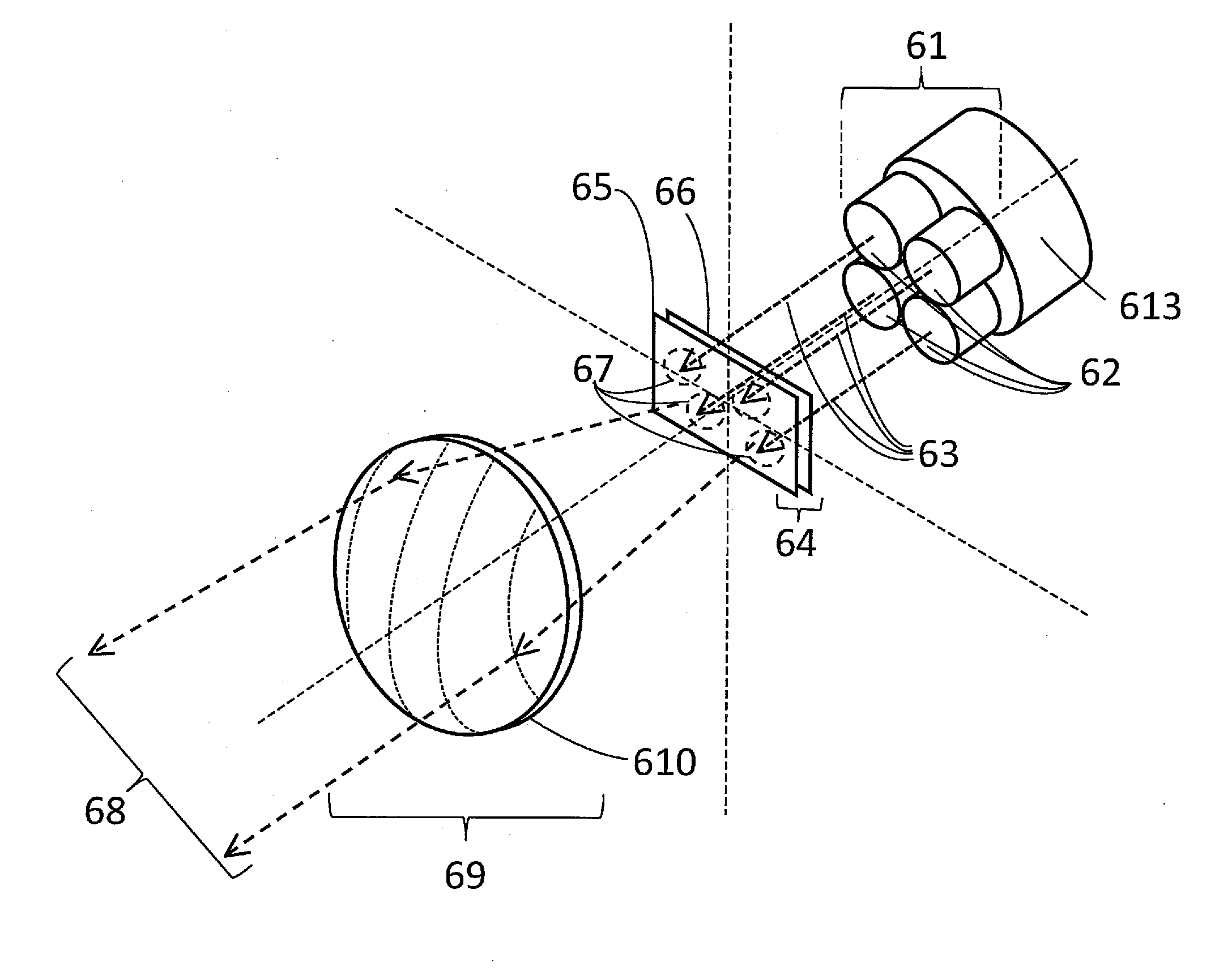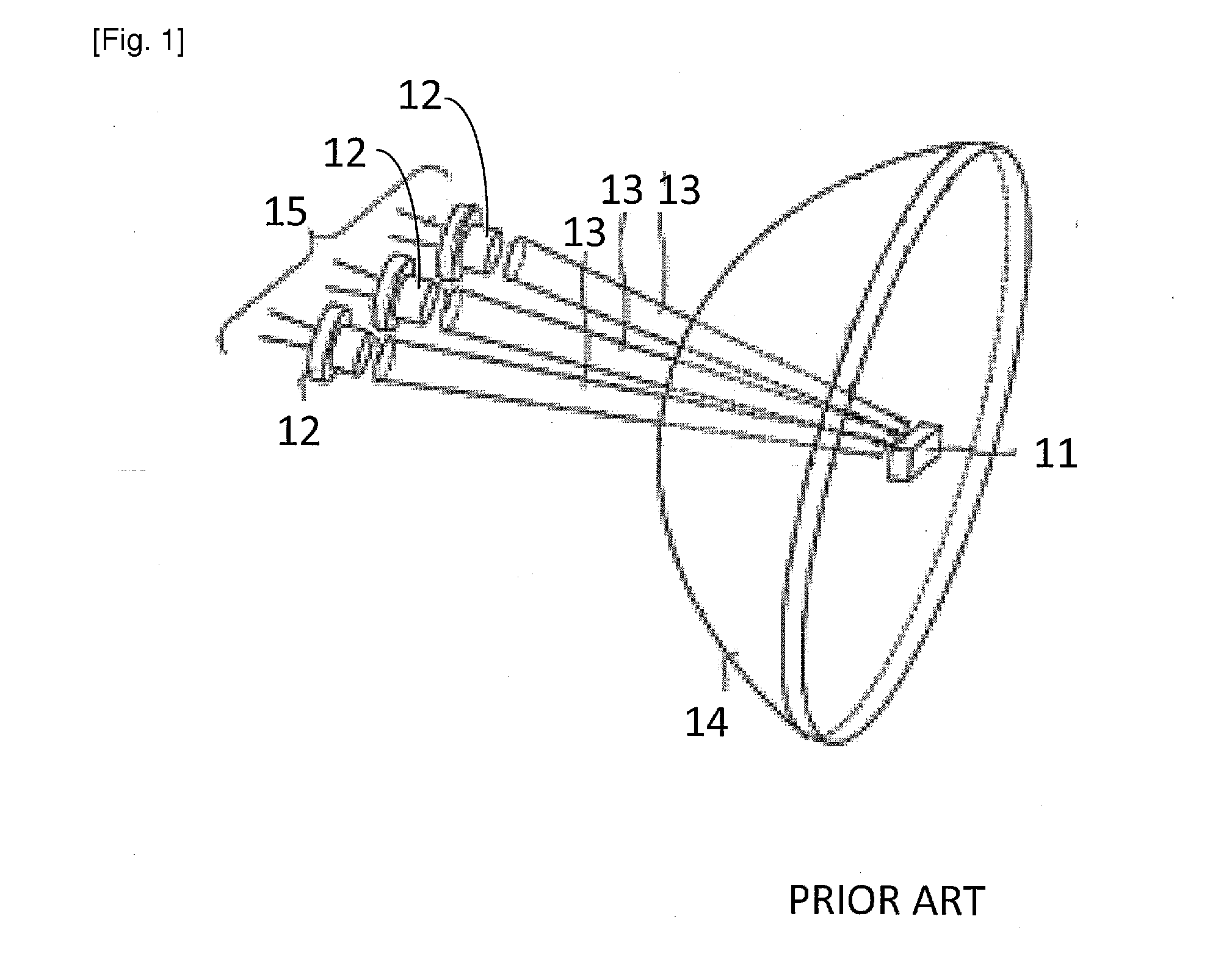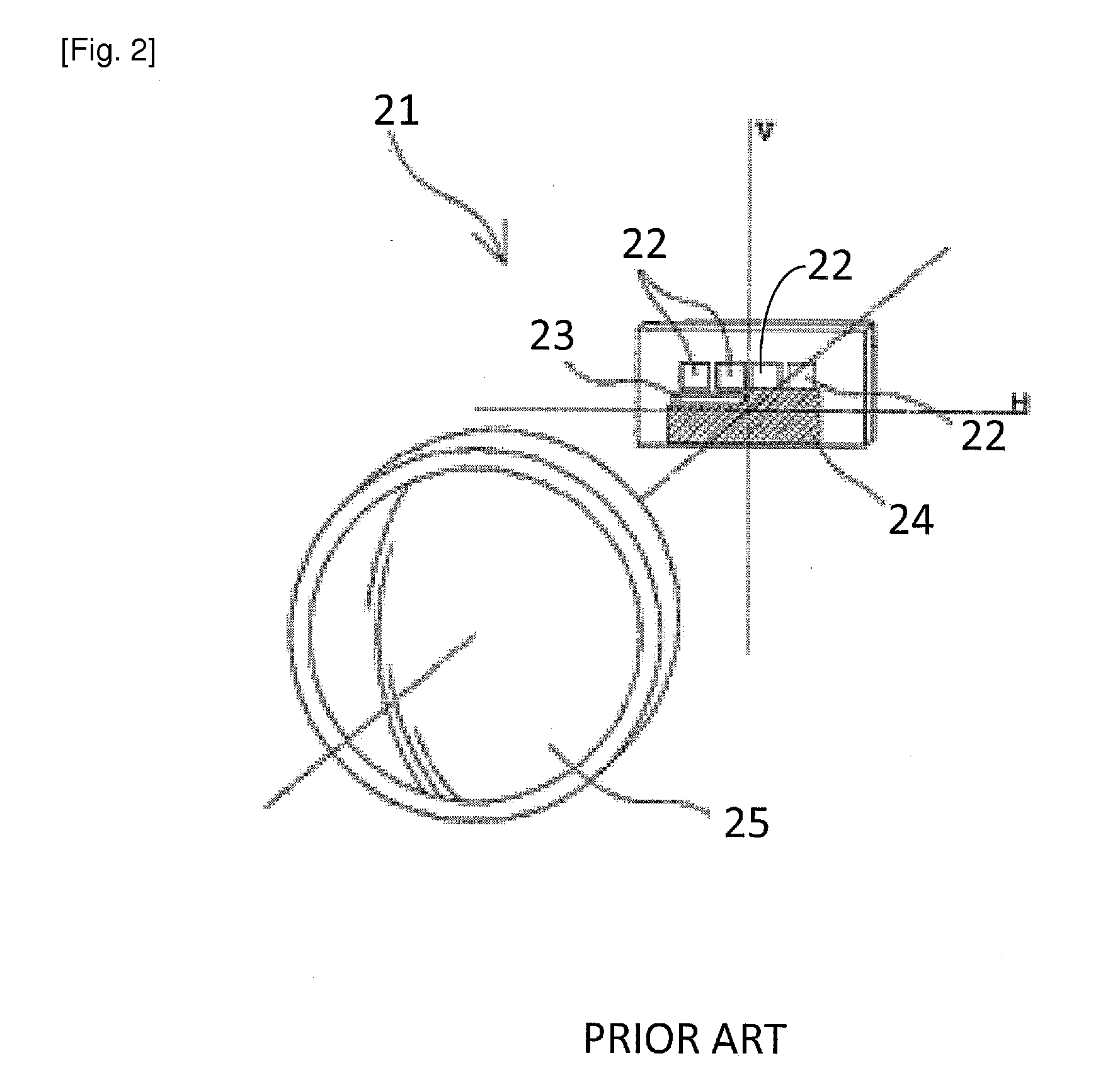Headlight system incorporating adaptive beam function
a headlight system and beam function technology, applied in the field of light source systems, can solve the problems of reducing the optical efficiency of the projector headlight, unable to modify the output from the source, and creating a restricted view
- Summary
- Abstract
- Description
- Claims
- Application Information
AI Technical Summary
Benefits of technology
Problems solved by technology
Method used
Image
Examples
Embodiment Construction
[0104]The main embodiment of the present invention is described herein and an overview of the same is presented in FIG. 6a. A group of laser light sources 61 is comprised of an array of multiple individual laser emitters 62. The laser emitters 62 may be mounted on a heat sink 613 if necessary. From herein the heat sink 613 will be omitted from figures for clarity, but may always be associated with laser emitters 62 or a laser emitter array 61. The laser emitters 62 emit, in use, light beams 63 of a first waveband. The light beams 63 of the first waveband from the laser emitters 62 are directed onto a light source 64 comprising a fluorescent material 65 which it deposited onto a substrate 66. From herein the light source 64 will generally be shown as one object. The individual light beams 63 form an array of illumination spots 67 on the light source 64 which are distinct, but not necessarily separated from one another. The fluorescent material 65 converts the light of the first waveb...
PUM
 Login to View More
Login to View More Abstract
Description
Claims
Application Information
 Login to View More
Login to View More - R&D
- Intellectual Property
- Life Sciences
- Materials
- Tech Scout
- Unparalleled Data Quality
- Higher Quality Content
- 60% Fewer Hallucinations
Browse by: Latest US Patents, China's latest patents, Technical Efficacy Thesaurus, Application Domain, Technology Topic, Popular Technical Reports.
© 2025 PatSnap. All rights reserved.Legal|Privacy policy|Modern Slavery Act Transparency Statement|Sitemap|About US| Contact US: help@patsnap.com



